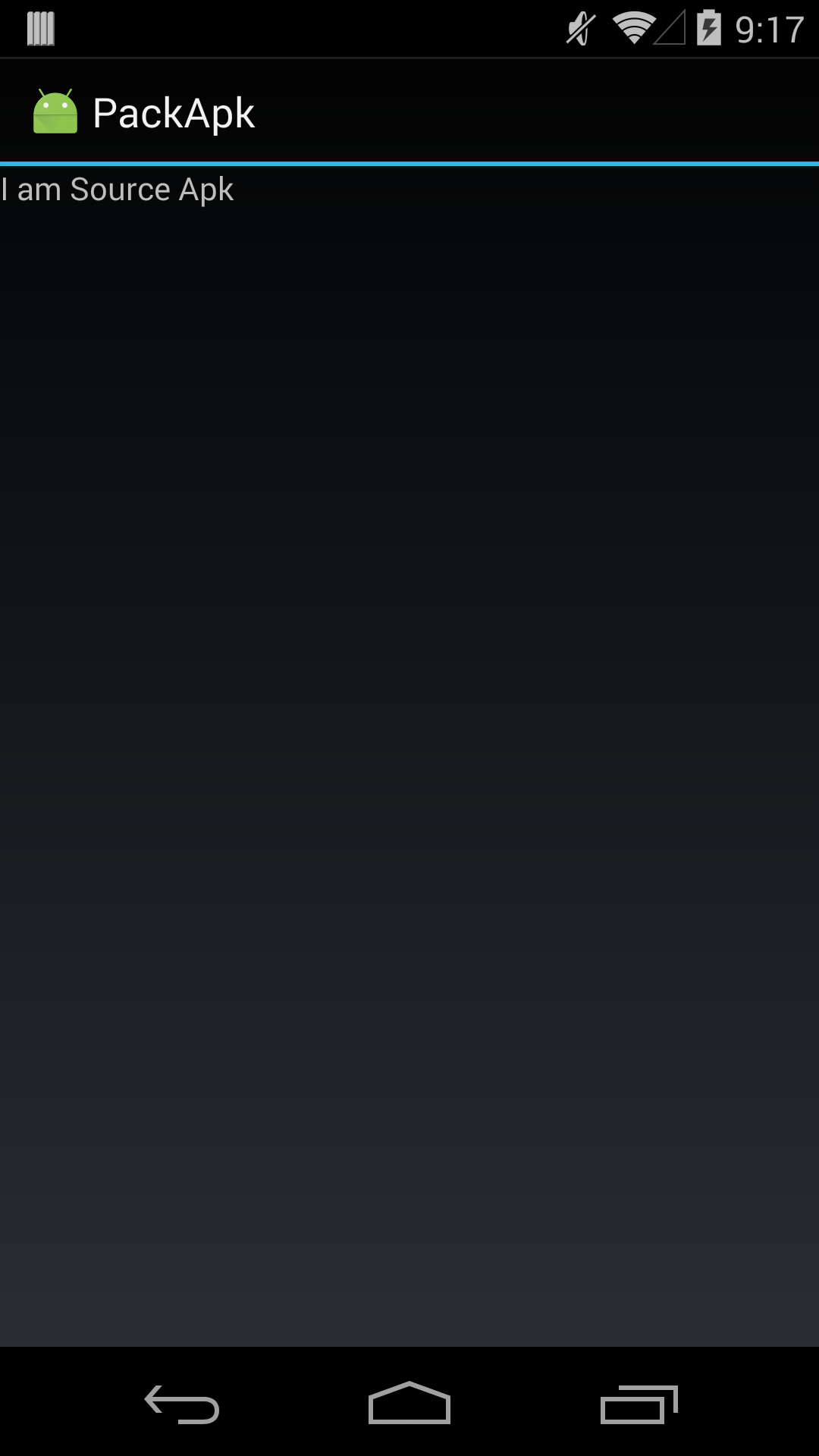// 这是context赋值
@Override
protected void attachBaseContext(Context base) {
super.attachBaseContext(base);
try {
// 创建两个文件夹payload_odex、payload_lib,私有的,可写的文件目录
File odex = this.getDir(“payload_odex”, MODE_PRIVATE);
File libs = this.getDir(“payload_lib”, MODE_PRIVATE);
odexPath = odex.getAbsolutePath();
libPath = libs.getAbsolutePath();
apkFileName = odex.getAbsolutePath() + “/payload.apk”;
File dexFile = new File(apkFileName);
Log.i(“demo”, “apk size:”+dexFile.length());
if (!dexFile.exists())
{
dexFile.createNewFile(); //在payload_odex文件夹内,创建payload.apk
// 读取程序classes.dex文件
byte[] dexdata = this.readDexFileFromApk();
// 分离出解壳后的apk文件已用于动态加载
this.splitPayLoadFromDex(dexdata);
}
// 配置动态加载环境
Object currentActivityThread = RefInvoke.invokeStaticMethod(
“android.app.ActivityThread”, “currentActivityThread”,
new Class[] {}, new Object[] {});//获取主线程对象
String packageName = this.getPackageName();//当前apk的包名
ArrayMap mPackages = (ArrayMap) RefInvoke.getFieldOjbect(
“android.app.ActivityThread”, currentActivityThread,
“mPackages”);
WeakReference wr = (WeakReference) mPackages.get(packageName);
// 创建被加壳apk的DexClassLoader对象 加载apk内的类和本地代码(c/c++代码)
DexClassLoader dLoader = new DexClassLoader(apkFileName, odexPath,
libPath, (ClassLoader) RefInvoke.getFieldOjbect(
“android.app.LoadedApk”, wr.get(), “mClassLoader”));
//把当前进程的mClassLoader设置成了被加壳apk的DexClassLoader
RefInvoke.setFieldOjbect(“android.app.LoadedApk”, “mClassLoader”,
wr.get(), dLoader);
Log.i(“demo”,“classloader:”+dLoader);
try{
Object actObj = dLoader.loadClass(“com.example.sourceapk.MainActivity”);
Log.i(“demo”, “actObj:”+actObj);
}catch(Exception e){
Log.i(“demo”, “activity:”+Log.getStackTraceString(e));
}
} catch (Exception e) {
Log.i(“demo”, “error:”+Log.getStackTraceString(e));
e.printStackTrace();
}
}
这里需要注意的一个问题,就是我们需要找到一个时机,就是在壳程序还没有运行起来的时候,来加载源程序的APK,执行它的onCreate方法,那么这个时机不能太晚,不然的话,就是运行壳程序,而不是源程序了。查看源码我们知道。Application中有一个方法:attachBaseContext这个方法,它在Application的onCreate方法执行前就会执行了,所以我们的工作就需要在这里进行。
A) 从APK中获取到DEX文件
/**
- 从apk包里面获取dex文件内容(byte)
- @return
- @throws IOException
*/
private byte[] readDexFileFromApk() throws IOException {
ByteArrayOutputStream dexByteArrayOutputStream = new ByteArrayOutputStream();
ZipInputStream localZipInputStream = new ZipInputStream(
new BufferedInputStream(new FileInputStream(
this.getApplicationInfo().sourceDir)));
while (true) {
ZipEntry localZipEntry = localZipInputStream.getNextEntry();
if (localZipEntry == null) {
localZipInputStream.close();
break;
}
if (localZipEntry.getName().equals(“classes.dex”)) {
byte[] arrayOfByte = new byte[1024];
while (true) {
int i = localZipInputStream.read(arrayOfByte);
if (i == -1)
break;
dexByteArrayOutputStream.write(arrayOfByte, 0, i);
}
}
localZipInputStream.closeEntry();
}
localZipInputStream.close();
return dexByteArrayOutputStream.toByteArray();
}
B) 从壳程序DEX中得到源程序APK文件
/**
- 释放被加壳的apk文件,so文件
- @param data
- @throws IOException
*/
private void splitPayLoadFromDex(byte[] apkdata) throws IOException {
int ablen = apkdata.length;
//取被加壳apk的长度 这里的长度取值,对应加壳时长度的赋值都可以做些简化
byte[] dexlen = new byte[4];
System.arraycopy(apkdata, ablen - 4, dexlen, 0, 4);
ByteArrayInputStream bais = new ByteArrayInputStream(dexlen);
DataInputStream in = new DataInputStream(bais);
int readInt = in.readInt();
System.out.println(Integer.toHexString(readInt));
byte[] newdex = new byte[readInt];
//把被加壳的源程序apk内容拷贝到newdex中
System.arraycopy(apkdata, ablen - 4 - readInt, newdex, 0, readInt);
//这里应该加上对于apk的解密操作,若加壳是加密处理的话
// 对源程序Apk进行解密
newdex = decrypt(newdex);
// 写入apk文件
File file = new File(apkFileName);
try {
FileOutputStream localFileOutputStream = new FileOutputStream(file);
localFileOutputStream.write(newdex);
localFileOutputStream.close();
} catch (IOException localIOException) {
throw new RuntimeException(localIOException);
}
// 分析被加壳的apk文件
ZipInputStream localZipInputStream = new ZipInputStream(
new BufferedInputStream(new FileInputStream(file)));
while (true) {
ZipEntry localZipEntry = localZipInputStream.getNextEntry(); // 这个也遍历子目录
if (localZipEntry == null) {
localZipInputStream.close();
break;
}
// 取出被加壳apk用到的so文件,放到libPath中(data/data/包名/payload_lib)
String name = localZipEntry.getName();
if (name.startsWith(“lib/”) && name.endsWith(".so")) {
File storeFile = new File(libPath + “/”
- name.substring(name.lastIndexOf(’/’)));
storeFile.createNewFile();
FileOutputStream fos = new FileOutputStream(storeFile);
byte[] arrayOfByte = new byte[1024];
while (true) {
int i = localZipInputStream.read(arrayOfByte);
if (i == -1)
break;
fos.write(arrayOfByte, 0, i);
}
fos.flush();
fos.close();
}
localZipInputStream.closeEntry();
}
localZipInputStream.close();
}
C) 解密源程序APK
//直接返回数据,读者可以添加自己解密方法
private byte[] decrypt(byte[] srcdata) {
for(int i=0;i<srcdata.length;i++){
srcdata[i] = (byte)(0xFF ^ srcdata[i]);
}
return srcdata;
}
- 找到源程序的Application程序,让其运行
@Override
public void onCreate() {
{
//loadResources(apkFileName);
Log.i(“demo”, “onCreate”);
// 如果源应用配置有Appliction对象,则替换为源应用Applicaiton,以便不影响源程序逻辑。
String appClassName = null;
try {
ApplicationInfo ai = this.getPackageManager()
.getApplicationInfo(this.getPackageName(),
PackageManager.GET_META_DATA);
Bundle bundle = ai.metaData;
if (bundle != null && bundle.containsKey(“APPLICATION_CLASS_NAME”)) {
appClassName = bundle.getString(“APPLICATION_CLASS_NAME”);//className 是配置在xml文件中的。
} else {
Log.i(“demo”, “have no application class name”);
return;
}
} catch (NameNotFoundException e) {
Log.i(“demo”, “error:”+Log.getStackTraceString(e));
e.printStackTrace();
}
//有值的话调用该Applicaiton
Object currentActivityThread = RefInvoke.invokeStaticMethod(
“android.app.ActivityThread”, “currentActivityThread”,
new Class[] {}, new Object[] {});
Object mBoundApplication = RefInvoke.getFieldOjbect(
“android.app.ActivityThread”, currentActivityThread,
“mBoundApplication”);
Object loadedApkInfo = RefInvoke.getFieldOjbect(
“android.app.ActivityThread$AppBindData”,
mBoundApplication, “info”);
//把当前进程的mApplication 设置成了null
RefInvoke.setFieldOjbect(“android.app.LoadedApk”, “mApplication”,
loadedApkInfo, null);
Object oldApplication = RefInvoke.getFieldOjbect(
“android.app.ActivityThread”, currentActivityThread,
“mInitialApplication”);
//http://www.codeceo.com/article/android-context.html
ArrayList mAllApplications = (ArrayList) RefInvoke
.getFieldOjbect(“android.app.ActivityThread”,
currentActivityThread, “mAllApplications”);
mAllApplications.remove(oldApplication); // 删除oldApplication
ApplicationInfo appinfo_In_LoadedApk = (ApplicationInfo) RefInvoke
.getFieldOjbect(“android.app.LoadedApk”, loadedApkInfo,
“mApplicationInfo”);
ApplicationInfo appinfo_In_AppBindData = (ApplicationInfo) RefInvoke
.getFieldOjbect(“android.app.ActivityThread$AppBindData”,
mBoundApplication, “appInfo”);
appinfo_In_LoadedApk.className = appClassName;
appinfo_In_AppBindData.className = appClassName;
Application app = (Application) RefInvoke.invokeMethod(
“android.app.LoadedApk”, “makeApplication”, loadedApkInfo,
new Class[] { boolean.class, Instrumentation.class },
new Object[] { false, null }); // 执行 makeApplication(false,null)
RefInvoke.setFieldOjbect(“android.app.ActivityThread”,
“mInitialApplication”, currentActivityThread, app);
ArrayMap mProviderMap = (ArrayMap) RefInvoke.getFieldOjbect(
“android.app.ActivityThread”, currentActivityThread,
“mProviderMap”);
Iterator it = mProviderMap.values().iterator();
while (it.hasNext()) {
Object providerClientRecord = it.next();
Object localProvider = RefInvoke.getFieldOjbect(
“android.app.ActivityThread$ProviderClientRecord”,
providerClientRecord, “mLocalProvider”);
RefInvoke.setFieldOjbect(“android.content.ContentProvider”,
“mContext”, localProvider, app);
}
Log.i(“demo”, “app:”+app);
app.onCreate();
}
}
直接在壳程序的Application中的onCreate方法中进行就可以了。这里还可以看到是通过AndroidManifest.xml中的meta标签获取源程序APK中的Application对象的。 下面来看一下AndroidManifest.xml文件中的内容:
<applicatio
n
android:allowBackup=“true”
android:icon="@drawable/ic_launcher"
android:label="@string/app_name"
android:name=“com.example.packapk.ProxyApplication”>
这里我们定义了源程序APK的Application类名。?项目下载
三.运行程序
下面就看看程序的运行步骤:
- 第一步:得到源程序APK文件和壳程序的DEX文件 运行源程序和壳程序项目,之后得到这两个文件(将壳程序的classes.dex文件改名为SourceApk.dex),然后使用加密工具进行加壳。
- 第二步:替换壳程序中的classes.dex文件 我们在第一步中得到加壳之后的classes.dex文件之后,将其与PackApk.apk中的原classes.dex文件替换。
- 第三步:在第二步的时候得到替换之后的PackApk.apk文件,这个文件因为被修改了,所以我们需要重新对它签名,不然运行也是报错的。 签名之后的文件就可以运行了,效果如下:

文件改名为SourceApk.dex),然后使用加密工具进行加壳。
- 第二步:替换壳程序中的classes.dex文件 我们在第一步中得到加壳之后的classes.dex文件之后,将其与PackApk.apk中的原classes.dex文件替换。
- 第三步:在第二步的时候得到替换之后的PackApk.apk文件,这个文件因为被修改了,所以我们需要重新对它签名,不然运行也是报错的。 签名之后的文件就可以运行了,效果如下:
[外链图片转存中…(img-XtvfYlCr-1643027731256)]